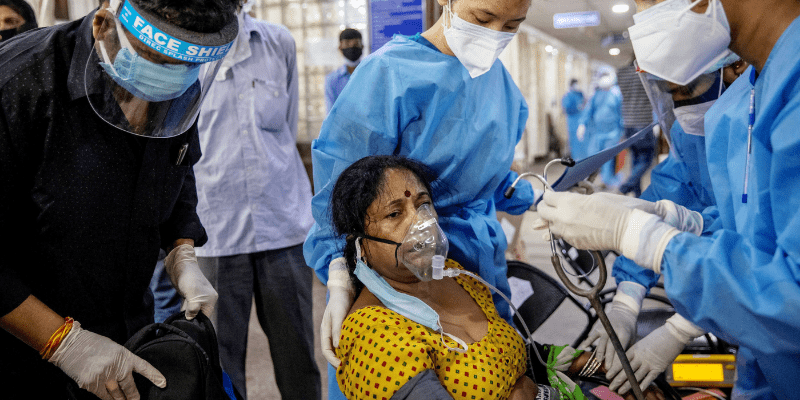Co Author: Dr. Swati Mahajan
4 min read
Infobyte: What is the next crisis?
In 2019, the World Health Organisation (WHO) agreed on an ambitious Five Year Strategic Plan known as the ‘Triple Billion Targets’. Under this initiative, by the year 2023, the WHO proposes to achieve three targets:
- 1 billion more people have access to universal health coverage
- 1 billion more people are better protected from health emergencies
- 1 billion more people enjoy better health & well being
Achieving these targets will improve access to public healthcare and strengthen resilience of health systems across the world. There are two key aspects for public policy professionals and impact investors to consider for the Triple Billion Target – i) In order to achieve this goal, the 10 Global threats listed out by WHO need to be addressed and ii) Given India’s population size, global success is largely linked to India’s success in combatting the threats.
These 10 threats can be broadly categorized into disease-based concerns, societal and behavioural concerns and infrastructural and systemic concerns.
Disease based concerns: This includes the increased burden of Non-Communicable Diseases (NCDs) such as diabetes, cancer and heart related diseases that are caused by tobacco use, physical inactivity, consumption of unhealthy foods and poor lifestyle. NCDs account for approximately 70 percent of deaths across the world. In India, Non-communicable diseases contribute to 62% of total deaths in India and 48% of preventable premature mortalities. India also has a high burden of Neglected Tropical Diseases (NTDs), with the highest prevalence of dengue, along with Bangladesh & Nepal.
Societal and Behavioural concerns: Vaccine hesitancy, HIV and Multi-drug resistant Tuberculosis are three major areas of concern that urgently require social and behavioural change. Both need mass information campaigns to counter misinformation and increase awareness on impacts of unsafe sex, drug use, social taboos and stigmas associated with diseases and vaccines.
Despite having made significant progress, India still has a long way to go in both these areas. For Instance, the Measles-Rubella Vaccine campaign, which aims to cover 40 crore children in India, is currently in limbo because of hesitancy on the part of parents. Unfortunately, India accounts for one-third of all measles related deaths in the world, proving how debilitating vaccine hesitancy can be.
Similarly, India continues to have a high incidence of HIV (approx. 2.1 million people), aggravated due to poor contraceptive use, high incidence of drug use and stigma related to antiretroviral therapy. To reduce the burden of HIV, it is crucial to first target and address these other challenges.
Antimicrobial resistance (AMR) is another growing threat that needs to be tackled immediately as it renders medications used to cure infections ineffective. AMR is caused by indiscriminate and improper use of antibiotics, which is common in India because of issues such as over the counter availability of antibiotics, poor hygiene and sanitation etc. Drug resistant Tuberculosis (TB) is a major contributor to AMR, both worldwide and in India. Resistance to TB drugs has become a huge obstacle in treatment and prevention of TB and has resulted in poorer outcomes for patients. It is crucial to prioritise and address AMR, else all the strides made in treatment of TB and other diseases will suffer major setbacks.
Infrastructural and systemic concerns: Disease based and societal concerns are compounded by the lack of sufficient infrastructural and systemic support. Air pollution and climate change is one such area where long term, multi-stakeholder and capital-intensive solutions are needed. The effects of climate change (droughts, floods, storms, heat waves, forest fires etc.) can cause geopolitical changes, economic shocks and natural resource scarcity that threaten to further destabilize fragile and vulnerable settings. Approximately 22 percent of the global population lives in these crisis zones. Fragile systems coupled with weak primary health infrastructure, impact access to even basic healthcare facilities. In India’s case, the weak primary health care system has caused high out of pocket expenditure, pushing families into poverty.
Each of the challenges listed above require strategic partnerships – public, private, civil society and multilateral support together to create a multiplier effect. Existing operational silos thus need to be broken down to work coherently towards the common global vision laid out under the Triple Billion Target and SDG-3 targets.
To this end, USAID’s flagship health system strengthening project NISHTHA, implemented by Jhpiego in partnership with AVPN is working towards creating strategic partnerships between the public and private sectors through establishment of platforms, alliances, collaborations and resource mobilization; and is leveraging the potential of private sector engagement for strengthening comprehensive primary healthcare in India. NISHTHA works closely with the Ministry of Health and Family Welfare at the national level and 12 state governments to transform, redesign and re-engineer primary health care in India for the provision of equitable, comprehensive and client-centered primary health care that contributes to improved health outcomes for India’s marginalized and vulnerable populations. There is an urgent need to create systems that ensure that everyone, irrespective of who they are, or where they live have access to quality comprehensive primary healthcare.


















